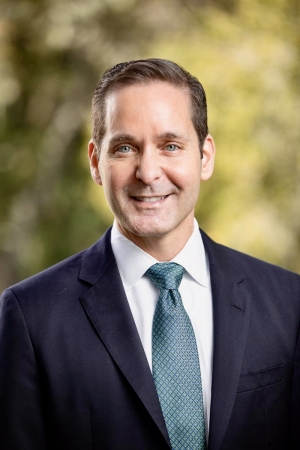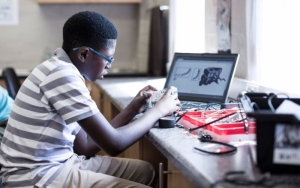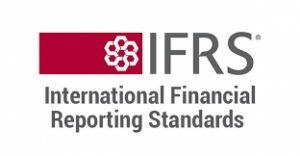عرض العناصر حسب علامة : COVID19
مواد تعليمية لدعم الشركات في تطبيق متطلبات الاستمرارية
تنشر مؤسسة المعايير الدولية لإعداد التقارير المالية مواد تعليمية لدعم الشركات في تطبيق متطلبات الاستمرارية
معلومات إضافية
-
المحتوى بالإنجليزية
IFRS Foundation publishes educational material to support companies in applying going concern requirements
The educational material is published to support consistent application of IFRS Standards and does not change, or add to, existing requirements.
Companies preparing financial statements using IFRS Standards are required to assess their ability to continue as a going concern. In the current stressed economic environment arising from the covid-19 pandemic, deciding whether the financial statements should be prepared on a going concern basis may involve a greater degree of judgement than usual. To support companies, the educational material brings together the requirements in IFRS Standards relevant for going concern assessments.
The Foundation has committed to supporting stakeholders during the pandemic; further educational materials published by the IFRS Foundation in relation to the covid-19 pandemic can also be accessed under the ‘Supporting application’ section of this page.
Access the Going concern—a focus on disclosure educational material.
اختيار رئيس جمعية كاليفورنيا للمحاسبين القانونيين كرئيس تنفيذي جديد لمعهد المدققين الداخليين
سيخلف الرئيس والمدير التنفيذي لجمعية كاليفورنيا للمحاسبين القانونيين أنتوني بوجليس القائد القديم لمعهد المدققين الداخليين، ريتشارد تشامبرز
معلومات إضافية
-
المحتوى بالإنجليزية
CalCPA chief picked as new IIA CEO
By Michael Cohn
California Society of CPAs president and CEO Anthony Pugliese will be succeeding the longtime leader of the Institute of Internal Auditors, Richard Chambers, as the IIA’s new president and CEO at the end of March.
The IIA announced Tuesday that Pugliese will be taking the reins of the Lake Mary, Florida-based organization when Chambers steps down March 31. Chambers announced his retirement last year after leading the IIA for 12 years, and the institute engaged executive search firm Korn Ferry to find a replacement (see story). They identified Pugliese as a strong candidate to succeed Chambers.
Apart from his experience leading CalCPA -- the largest state CPA society, with 45,000 members -- Pugliese was also a longtime official at the American Institute of CPAs and later the Association of International Certified Professional Accountants. From 1997 through 2018, he held important leadership positions at the AICPA, including chief operating officer; executive vice president of membership, technology and learning; senior vice president; and vice president of business reporting and member innovation. Among other things he oversaw the AICPA’s $50 million relocation from New York to North Carolina.
Pugliese initially plans to meet with other officials and members at the IIA to hear about their concerns as he works closely with Chambers during the transition period. He sees opportunities ahead for the organization, even as it adjusts to new ways of working during the COVID-19 pandemic.
“We’ve seen a deepening of the role for internal audit,” Pugliese told Accounting Today. “It’s understanding the trajectory of internal audit and continuing a broadening role across the profession. There’s just so much going on. We’re looking at a whole range of new risks and opportunities for the profession right now. Our primary goals are growth and to make sure we’re doing the advocacy that’s necessary for the changing times.”
Institute of Internal Auditors incoming president and CEO Anthony PugliesePhoto by Richard Morgenstein
He is seeing more advanced technology being used by auditors and wants to encourage early involvement of students in the profession. “We have a digital transformation that we’re working on not just at IIA, but also the transformation that has to occur across the profession,” said Pugliese. “By that I mean blockchain, AI, modernization of systems, etc., and making sure we've got our eyes set on the next generation of internal auditors, beginning in high school and early college years.”
As CEO of the IIA, Pugliese will manage the nearly 80-year-old organization, which boasts more than 200,000 members, 156 chapters and 112 affiliates in nearly 200 countries and territories. He plans to focus on improving membership services, creating new approaches to learning and competency development programs, completing the IIA’s multimillion-dollar digital transformation initiative, and enhancing the value of internal audit, especially when it comes to addressing organizational risks and opportunities.
“We are thrilled to welcome Anthony to the IIA,” said IIA global chair Jenitha John in a statement Tuesday. “He is an articulate, well-informed, passionate and results-driven leader with a consistent track record of great successes that inspire and benefit not only his organizations but, importantly, the members they serve. His strategic direction, coupled with his insight of internal audit’s evolution and the instrumental role technology holds for its future, will help the IIA grow and build value for our members and customers around the world.”
Pugliese has been frequently recognized as one of the Most Influential People in the profession by Accounting Today. He holds the AICPA's Chartered Global Management Accountant and Certified Information Technology Professional credentials, and is licensed as a CPA in California, Georgia and North Carolina.
Priorities for the future
He has worked on encouraging more diversity, equity and inclusiveness in the profession at both the AICPA and CalCPA. At CalCPA, he has also been working on a project with the Institute of Management Accountants on a study of diversity and inclusion in the profession. He and IMA president and CEO Jeff Thomson plan to discuss the topic during an online event on Thursday.
“All facets of the profession today are facing this problem,” said Pugliese. “The problem maybe has gotten better as far as underrepresented populations moving into the profession. But what we're seeing now is those that do are leaving at a disproportionate rate, so that would lead us to believe the problem is still in existence. The goal of the research with the IMA is to really get down to not just strategies on how to improve diversity within the profession, but really what's causing the problem to begin with. A lot of people have different ideas and a lot of companies with the best intentions tend to approach the problem by making sure they hire enough people that have backgrounds in underrepresented populations. But that really doesn't get to the root of the problem, which is feelings of inclusiveness and so forth. We’re looking at that now, and I'm really excited to look at it within the internal audit profession soon after I get started.”
Another priority for Pugliese will be educating members about the latest audit technology. “A lot of the time internal audit is acting as a complement to external audit,” he said. “They're going to be using a lot of the tools that external audit uses. That’s one angle where we need to have education across the profession so our members understand what’s being done on the external audit. For the most part they do, but technology continues to change.”
The Institute of Internal Auditors partners with other organizations besides the IMA. It’s part of an initiative called the Anti-Fraud Collaboration with the Center for Audit Quality, Financial Executives International and the National Association of Corporate Directors. Together, they released a report Tuesday analyzing fraud trends in recent years based on enforcement actions by the Securities and Exchange Commission (see story).
“Internal audit is always focused, at least in my experience, on fraud and fraud prevention, making sure to be alerted to the risks that are present there,” said Pugliese. “I oversaw the internal audit function for 15 years at AICPA. When I left, it had actually evolved into a pretty large team and that was one of their primary goals. I think where internal audit became even more valuable in that experience for me was when AICPA went global in 2016. Companies that are global have such a range of controls and regulation concerns that they have to deal with. As we become more and more global as a community across the planet, I think there is a much wider role for internal audit, and they’ve probably been operating in that for a long time.”
Pugliese has already begun working with Chambers during the transition. “We intentionally have about a month of overlap,” he said. “But Richard and I have already started our calls on a regular basis, so I think it’s a bit more like three months of us being able to work together and gain from his vast knowledge.”
He has been reading Chambers’ books, such as “Lessons Learned on the Audit Trail.”
“I'm beginning to get more and more entrenched into what he’s learned and his perspectives,” said Pugliese. “That’s been very helpful. Richard and I are going to be working closely. I'm sure he'll be OK if I call him after his last days. He’s been a fixture in the profession for over 12 years, and before that. He's been a great mentor.”
كيفية جمع المستندات من العملاء أثناء العمل عن بُعد؟
مع عمل الكثير منا من المنزل بسبب فيروس كورونا ، فإن الطريقة التي نعمل بها مع العملاء بأكبر قدر ممكن من الكفاءة أصبحت أكثر أهمية من أي وقت مضى
معلومات إضافية
-
المحتوى بالإنجليزية
How to collect documents from clients while working remotely
PRACTICE MANAGEMENT, WORKFLOW TOOLS
April 23, 2020 / Mariette Martinez, EA
With the tax deadline postponed and many of us working from home due to the coronavirus, being as efficient as possible with the way we work with clients is more important than ever. To be successful, we need to move more clients online. This starts with operating a 100 percent cloud-based practice and implementing an effective process for document collection.
Since my clients’ technical skills varied from highly tech savvy to new online app users, it was essential that the technology and client implementation would be seamless and user friendly for my multiple client types. I also wanted to keep our workflow as simple as possible, so using the fewest number of applications would create the best-case scenario. I wanted to synchronize what I had already implemented in my current operational workflow, while partnering that with serving my clients’ needs to stay connected. Ultimately, these processes provide me the necessary documents to keep our work flowing seamlessly.
I know that making these kinds of changes in your practice isn’t easy – and it takes time, especially now that we’re sheltering in place. According to an Intuit® Accountant Panel survey in March 2020 that asked about the most pressing issues due to the coronavirus, 42 percent of the 247 respondents said that getting documents from their clients was by far their biggest struggle when working virtually.
Whether you’re very experienced in collecting documents from your clients without seeing them in person – or if this is new for you because of the coronavirus, here are several best practices I can share to make the process easier.
The essence of a strong document collection platform, also referred to as a document portal, is a centralized, secure location to share documents and collaborate with clients and staff.
We chose Citrix ShareFile for our preferred solution, but several other options include Box, Dropbox, Google Drive, SmartVault and Intuit Link.
Several platforms allow firms to personalize the document portal experience with their firm branding to provide a more trusted and professional client experience. These document platforms also commonly enable:
Collaborating on documents and editing in real time.
Encrypted client requests with notifications and reminders.
Encrypted email for those times when email is the best way.
Sending and receiving of large files.
Most importantly, the document collection solution you choose should include a high level of encryption for your files, large space storage capabilities that can scale with your firm, and online and desktop automated syncing of all stored files. You definitely don’t want to encourage clients to send you their documents over email. The bottom line is that you and your clients should be able to securely share, collect, and collaborate on documents no matter where you are.
In addition, several platforms integrate with other helpful tools. One of my favorite integrations is Slack with Google Drive. What are some of your favorite integrations? Leave a comment below to share your recommendations.
One other concern: What do you do if your clients don’t want to send you their documents through the cloud? These “shoebox” clients may not be tech savvy and prefer physically dropping off their information to you, but if you’re working remotely and cannot see them in person, what do you do? You don’t want to lose a long-term client, so here are several recommendations:
Sit down with them over a phone conversation, or if they can figure it out, a web call, to explain how your portal works. Walk them slowly through the process and perhaps have them practice or test uploading something to you.
Record a quick video that also explains the process and send this to your clients who may need help using the platform. You can also include a link to the video in your email signature. Here’s an example of this type of video.
If a client absolutely insists on dropping off or mailing their documents, the best advice I can give is to go with the flow, and ensure your clients have a secure, private place to leave their documents with you outside your place of work to avoid contact during drop off. Most likely, this will be a very small slice of your client base.
When you find and implement the winning platform, you not only stay safe during this time of social distancing, but you will save time on document collection in your practice and witness the magic of productive collaboration. Good luck!
قائمة مهامك لنجاح شركتك في 2021
نجتهد كل عام في إنشاء عشرات من المهام المختلفة والمتميزة لوضعها في جدول التقويم الخاص بك على أمل تحفيزك لجعلك مميزاً في مجالك عن غيرك
معلومات إضافية
-
المحتوى بالإنجليزية
Your 2021 to-do list
By Daniel Hood
Whatever plans you had for 2020 were likely disrupted by the events of the year, so it seems presumptuous to try to set anything in stone for 2021. We’re not going to let that stop us, though, and so, as we do each year, we’re using this space to offer you 12 tasks you can put on your to-do list right now.
January
online-zoom-meeting.jpg
Ģirts Raģelis/Girts - stock.adobe.com
With so many staff working from home, it’s hard for them to just walk down the hall to ask a question. Instead, offer them “virtual office hours” — set up an open Zoom call or Google Meet for an hour or two each week where you’ll be ready to talk to any employee who calls in.
February
Lease contract, close-up
andia-faith/andiafaith - stock.adobe.com
Hopefully, we’ll all be talking about resuming regular work regimes, so this would be a good time to survey your staff about when, whether and how they want to return to the office — if they want to return to the office at all. You also might want to dig out your lease and see if you have any options for reducing the amount of space you use
March
Tax extension form
Picasa
Pick a date, and tell any clients who don’t have their tax docs in by that date that they’re going on extension. Then stick to it.
April
p198t4eqkm4031vfi13bq164hhfc6.jpgAfter each tax return you complete, take a brisk five- or 10-minute walk.
May
p1b6951ta71s2i1rao1m8e1ojh12dog.jpg
yurolaitsalbert - Fotolia
Start making sure everyone has a chance to be heard in meetings, either by calling out interruptions (which are rude, anyway) or by instituting a turn-based system where you deliberately give everyone a chance to weigh in on the topic — or both. The loudest person isn’t always right.
June
Summer reading 2019
Dudarev Mikhail/Dudarev Mikhail - stock.adobe.com
Pick a business-related article, video, podcast episode or book that caught your interest, and share it with staff. Then meet up virtually (break into smaller groups, if necessary) to discuss it and how it applies to your firm. Repeat on a monthly basis. Accept suggestions from staff.
July
ft-disposal.jpg
Africa Studio - Fotolia
Pick a single process at your firm — whether internal or client-facing — and ruthlessly drive out any paper-based steps. Repeat.
August
bitcoin-three.jpg
prima91 - Fotolia
Investigate accepting new types of payments — everything from credit cards to ACH payments, PayPal, Venmo and cryptocurrencies — and adopt whichever will work for your clients.
September
p18qaui29kes61nbmjj71ic51jvj7.jpg
creative soul - Fotolia
Experts had been predicting a worldwide pandemic like the coronavirus for 30 years. Research some other challenges that experts say are likely in the future, and figure out how they’ll impact your firm — or your clients. (Climate change is certainly a good choice here, but bonus points for going beyond that.)
October
Technology gap
Sergio Donà/itestro - stock.adobe.com
Conduct a technology inventory. Does everyone on staff have all the screens, scanners, tablets, etc., that they need? Is all their software appropriately licensed, and all their security software up to date? Alternatively, check the service-level agreements on one of your cloud-based apps. Are they living up to the terms?
November
New York City map with pushpin
Robert Byron/Rob Byron - Fotolia
Check your client list to see what percentage of them are within 25 miles of you. Then go through your service offerings to determine how many actually require you to be able to meet face to face with the client. Draw your own conclusions.
December
p18rfc8oi6s7djdg32ku481ush6.jpgWe’ve suggested this before, but as the years get harder, it’s only getting more important: Close your office between Christmas and New Year’s.
https://www.accountingtoday.com/list/your-2021-to-do-list?utm_campaign=accountingtoday-tw&utm_content=socialflow&utm_medium=social&utm_source=twitter
نجاح خطط التعافي المستدام
معلومات إضافية
-
المحتوى بالإنجليزية
Can we warm a cooling economy by cooling a warming planet?
By Gianluca Di Pasquale
EY Global Green Economies & Infrastructure Leader and Future Cities Co-Leader
Across the world, the COVID-19 pandemic has devasted lives and livelihoods, with the necessary lockdowns causing the deepest economic downturn since the Great Depression.
Governments have been forced to address a dual challenge: unprecedented demand for financial support and public services, coupled with dwindling tax revenues from economic activity. The amount of economic stimulus globally has exceeded US$12t. And in many countries, public debt, already high following the Global Financial Crisis (GFC), is now at historic levels.
The global pandemic brings with it a chance for radical change
The immediate tasks of governments are to address the health care crisis and restore economic growth.
In this context, the aims of the Paris Agreement – to keep the rise in global temperature to below 2% and pursue efforts to keep it to 1.5% – may appear an unnecessary distraction. But as the recent US wildfires and other extreme weather events around the world vividly demonstrate, the devastating impacts of climate change can’t be ignored.
While the economic slowdown caused daily global greenhouse gas emissions to fall 17%¹ by early April, compared with last year’s average, they’re quickly rising again as economies reopen. The world can ill-afford to achieve much-needed economic growth by resuming the polluting ways of the past. Instead, we must see the pandemic as a one-off opportunity to bring radical change – and make sure the economic recovery is sustainable.
Moving to a low-carbon economy will produce jobs and prevent human harm
Even before the pandemic, the World Bank estimated that a transition to low-carbon, resilient economies could create 65m new jobs by 2030.
What’s more, without urgent action, climate change could push a further 100m people into poverty by 2030, and displace 143m in just three regions.² Yet, according to Bloomberg New Energy Finance, as of July 2020, the top 50 economies had dedicated only around 5% of their national stimulus packages to sustainability initiatives.
Preparing for the future includes avoiding the mistakes of the past
The GFC was a different kind of crisis, but governments can still learn from its lessons.
Related article
Will the road to recovery lead to an economy that's revived or reimagined?
Will the road to recovery lead to an economy that's revived…
In the wake of COVID-19, governments and companies have an opportunity t…
19 Jun 2020 Jan Bellens
The proportion of stimulus governments are earmarking for sustainability measures is much lower today than after the GFC. Yet even that response failed to address the climate crisis – and the recovery led to more carbon emissions, not fewer.
Of course, much of the initial stimulus spending during the current crisis has focused on providing short-term relief on a scale not seen during the GFC. Predominantly, it’s gone on protecting employment and preventing insolvencies.
https://www.ey.com/en_ae/government-public-sector/can-we-warm-a-cooling-economy-by-cooling-a-warming-planet
ضمان تكافؤ الفرص في الوصول الرقمي للشباب
معلومات إضافية
-
المحتوى بالإنجليزية
Case for change: Ensuring equal opportunity digital access for global youth
by Bob Moritz and Henrietta Fore
In PwC’s 23rd Annual Global CEO Survey, which was undertaken before the COVID-19 pandemic, 74 percent of CEOs said they were worried about the availability of key skills. At the same time, we know that many of today’s youth — the people who will become our employees, customers, and, ultimately, our successors — aren’t getting the access to digital technologies and skills that enable them to thrive.
When schools around the world closed due to the pandemic, one in three young people — some 463 million — lost their only avenue for learning. According to a May 2020 surveyPDF by the International Labour Organization, approximately 90 percent of technical and vocational education and training centers in 126 countries reported complete closure. And more than 40 percent of employed youth were working in sectors hit hard by COVID-19PDF. More than ever, it is imperative that we take steps to close the youth digital divide.
The pandemic has accelerated existing trends and exposed, in a stark light, structural weaknesses in institutions and economies. Inequalities are rising at alarming rates for the most vulnerable in every society, particularly for the unconnected half of the world. As more facets of everyday life become increasingly digital — including education, work, healthcare, news, leisure — youth who are excluded from the digital world will almost certainly suffer long-term or permanent social and economic disenfranchisement. Unless we take action.
This is a moment to turn a crisis into an opportunity — not only to address the economic and social impacts wrought by the pandemic, but to rebound in a way that reverses long-standing challenges and puts youth on a more equal future footing. At the same time, we can also improve the economic fitness of societies at large, giving millions of workers the skills and resources necessary to participate fully in a society and economy that are increasingly digital. To achieve these ambitious goals, however, stakeholders — including businesses — will have to think differently about the roles they play.
As Stepping forward: Connecting today’s youth to the digital future, a report written by our colleagues at PwC and UNICEF, notes, there are four stepping stones that put disenfranchised youth, and thus society as a whole, on the road to a better future.
• Connectivity. The technical elements that allow youth to get online and access the internet and digital platforms: reliable power, digital infrastructure, and devices such as computers, mobile phones, and routers.
• Access. The non-technical elements that allow youth to take advantage of opportunities once they’re connected. These include cultural acceptance of online activity, family engagement and support, native-language content, wellness and emotional resources, and mental healthcare.
https://www.strategy-business.com/article/Case-for-change-Ensuring-equal-opportunity-digital-access-for-global-youth?gko=eca1d
خمسة تنبؤات تقنية لعام 2021
معلومات إضافية
-
المحتوى بالإنجليزية
5 enterprise technology predictions for 2021
By Stephen Boals
December 28, 2020 12:06 PM
There is no doubt that 2020 was a turbulent year, and I think we all felt we were out to stormy seas for a bit. But winter has arrived and, with it, another cold breath of uncertainty. Where do we go from here when examining our strategic imperatives? Do we have a crystal ball to predict what will happen in the coming year? Well, I whipped out my crystal ball (actually, I had really long conversations with industry experts, customers and partners, and scrutinized a lot of research) to make some predictions for 2021.
Coronavirus remote work telecommuting
Claire Tu, an employee at Reprise Digital, works from her home in Shanghai during the coronavirus outbreak.Qilai Shen/Bloomberg
Remote work until fall
Optimistic people believe we will be back and lounging in the corporate offices by spring. If you are in sync with Bill Gates, we are just over halfway through the pandemic. I think we are somewhere in between, with most agreeing on a fall timeline for returning to the office. But will we really ever get “back” to the office? 2021 will be the year of the hybrid work mode, with over half of our workforce on a permanent WFH plan.
Hackers will target remote workers
Long gone are the days of the corporate firewall, accompanied by all assets locked down virtually behind this protective measure. I cannot imagine dealing with hundreds or thousands of remote access employees, giving them office-like access to private company resources and ensuring the security for those assets. Outside of the corporate domain, end-user home networks and computer assets are now vulnerable to hackers as a path to the center of the corporate domain — at higher levels than ever before. I compare the vulnerability of COVID-19 and the ICU bed count: IT can handle remote access at lower rates but now that everyone is working remotely, this surge of activity can overwhelm both small and large organizations looking to protect their realm.
Cloud revenue will skyrocket
You can no longer kick the can down the road. The cloud is here and the migration of resources is inevitable. We are seeing cloud interest from verticals that never before would have considered it an option. Financial services, healthcare and other industries are realizing they have to be prepared for unplanned and uncertain events. Holding out in their on-premise bastions is hampering their agility and flexibility. I was on a panel last week about the rise of the cloud and leveraging multiple cloud providers. One of the participants likened the cloud to the invention of electricity and the pervasive electrical grid. If you are one of the holdouts using candles and all the competition has electrical lights, machinery and heat, you will lose.
On-premise ERP will die
ERP systems have always been an on-premise ball-and-chain for the enterprise, preventing movement to the cloud. It’s disorganized and a tangled web of customizations, satellite apps, reports and sunk costs were the bane of the accounting world, as well as a blockade on the high road to “cloudness.” I have seen a noticeable shift in the desire to recreate the ERP app web through SaaS offerings and a strategy of public and private cloud offerings. The rise of integration platforms (iPaaS) has also made data transport and migration a seamless, affordable exercise. In the past, this was either not possible or prohibitively expensive.
Businesses will reinvent themselves — again
The only certainty is uncertainty as we breach the wall to exit 2020 and arrive in the new year. Flexible and agile digital organizations will be able to weather challenges and storms that the upcoming year will bring. Businesses that can reorganize and reinvent will be the winners.
How will your organization fare in 2021?
https://www.accountingtoday.com/list/5-enterprise-technology-predictions-for-2021










